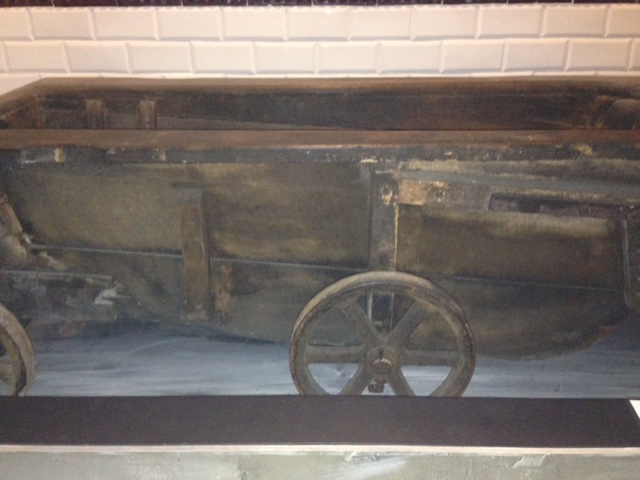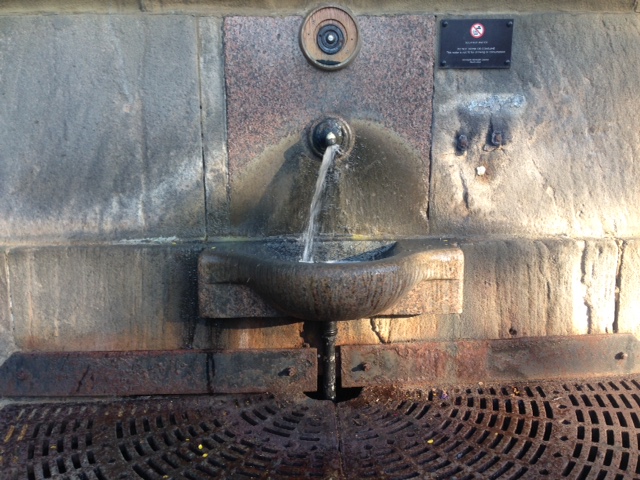
This being my third visit to the Theakston Old Peculier Crime Writing Festival, I knew I was in for a good time. There’s no other festival in the UK which attracts such a stellar line-up of authors, the 2019 event playing host to James Patterson, Val McDermid, M.C. Beaton, Harlan Coben and Jeffrey Deaver, to name but a few. Authors and delegates return to Harrogate year after year and it’s not hard to understand why: the Festival takes place in the legendary Old Swan Hotel (where Agatha Christie turned up after going missing for 11 days), fans and authors mingle and form lasting friendships – and Harrogate itself is gorgeous.
I was aware of Harrogate’s history as a spa town – but further than that, my knowledge did not extend, my previous visits having been solely Festival-focused. This time, however, I was determined to find out more about Harrogate’s origins – and how it evolved into a fashionable resort beloved of the Victorians. And where better to educate myself than the Royal Pump Room Museum?
This Museum may be small, but it is perfectly formed – and I spent a highly enjoyable couple of hours in this former spa water pump house. I highly recommend paying it a visit, should you been in the area – but in the meantime, here’s a little of what I learned…
In the 14th century, Harrogate consisted of just a few cottages, located within the Royal Forest of Knaresborough. The hamlet’s inhabitants made their living through agriculture, weaving and forestry.
However, in 1571 William Slingsby discovered the Tewit Well – and recognised the medicinal powers of the waters. As knowledge of the Well spread, it was named “the English spaw” by the physician Dr Bright; additional springs, including St John’s Well, the chalybeate springs and the Old Sulphur Well were soon identified and recommended for the treatment of scurvy, epilepsy and ulcers.
As Harrogate’s popularity grew, visitor numbers increased and the standard of accommodation and entertainment grew. By the Georgian era, visitors could take afternoon tea, attend a ball every night and go to the theatre. New shops sold luxury goods and more spa buildings were built to meet demand. In 1842, the Royal Pump Room opened and a routine for those visitors “taking the cure” developed. Beginning with a constitutional stroll and concluding with a concert, taking in letter writing, afternoon tea and rest: the itinerary pretty much describes my ideal day.

Soon, the rich & famous were queuing up to visit Harrogate, Charles Dickens and Celia Fiennes among them. Many were attracted by the social side of spa life, in a town which now had its own ‘season’. Dickens, however, was less than impressed, describing Harrogate as “the queerest place with the strangest people in it, leading the oddest lives of dancing, newspaper reading and dining”.
Perhaps it was the arduous journey that he undertook to reach Harrogate that put Dickens out so. Until 1862, when a train station was opened in central Harrogate, visitors had to make their way to the town on horseback or by public coach; its inhabitants did not want trains polluting their lovely town.
In 1897, Harrogate became an even more desirable destination, with the opening of the Royal Baths putting it in direct competition with other European spas. Harrogate now possessed baths and treatment rooms for men and women, complete with waiting rooms, refreshment areas and duty doctors.
Visitors could choose from more conventional treatments, such as peat baths and UV treatments, to the lesser-known Bergonie Treatment. With hindsight, the Museum informs us, dryly, some of these treatments were more effective than others.

The Royal Baths’ popularity continued well into the 20th century and during the 1930s a block of treatment rooms was added. Inevitably, however, fashions changed and, following World War II, Harrogate’s spa trade never really picked up. Today, only the Turkish Baths remain in use.
Thrillingly, my visit coincided with the daily excursion to the Sulphur and Iron Wells, located beneath the Museum – where our knowledgeable guide explained that this subterranean room was built in 1842, purely as a drinking (rather than bathing) facility. It’s illegal these days to drink sulphur water, but the Victorians were rather partial to it, finding it an effective antidote to their excessive eating and drinking.

As I left this jewel of a museum I discovered its outside “tap”, added after the 1841 Harrogate Act decreed that the poor should not be excluded from the perceived medicinal benefits of Harrogate’s sulphur water. It still works – and I can confirm that sulphur water really does smell like eggs gone bad. How the Victorians were able to stomach it, I will never understand – I most certainly do, however, understand why they loved Harrogate so much.

Great piece on Harrogate as a spa town. I agree to the water, I tried it in Bath and the rotten eggs smell almost out me off.
LikeLiked by 2 people
Thank you – and yes, I won’t be going near sulphur water again any time soon!
LikeLike
The whole piece was fascinating, but I especially liked the part about the tap for the poor! This I would not have thought would be there! Thanks, Liz!
LikeLiked by 2 people
It’s those snippets of insight which make history so fascinating, isn’t it? And thank you: I’m so glad you enjoyed the post. You’re always so positive about my writing, which I really appreciate.
LikeLike
It’s always the snippets, just like it’s always the details of a good meal or the someone’s attention to the finer points that really make the difference. You are welcome – i love your blog!
LikeLiked by 2 people
Thank you – and likewise, I always enjoy your writing and the fact that you write about so many different subjects.
LikeLike
Amazing what people believed, isn’t it? I wonder which of our medicinal cures will be looked on as quackery in a couple of hundred years time? (Oh, hang on, I can think of a few already).
LikeLiked by 2 people
I suspect the name ‘Gwyneth Paltrow’ will get a mention in the rundown of 21st century quackery 🙂
LikeLike
She probably accounts for about 90%!
LikeLiked by 1 person
🙂 🙂 🙂
LikeLiked by 1 person